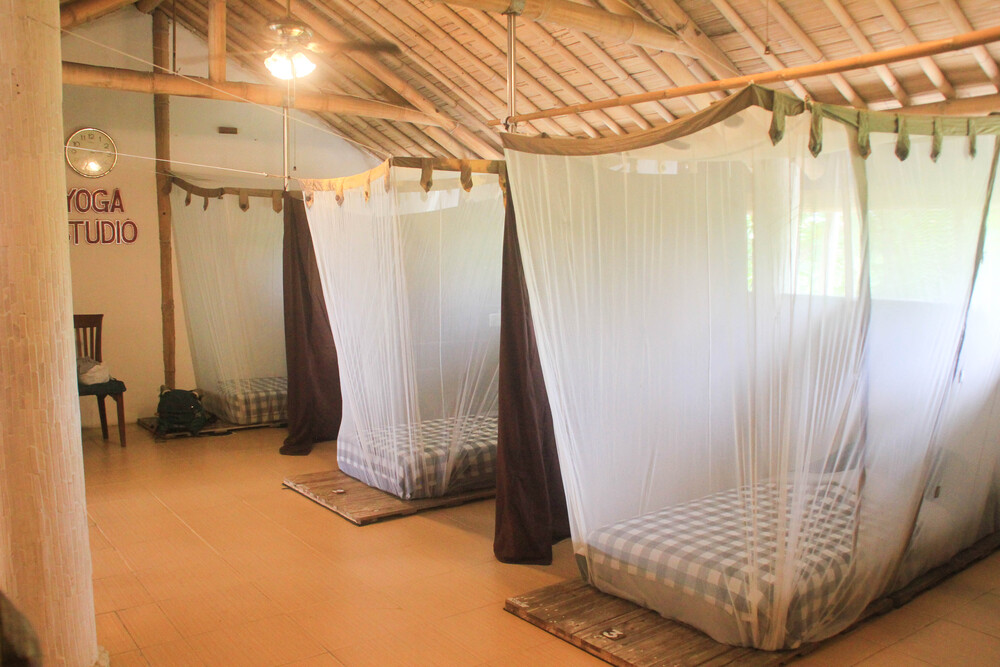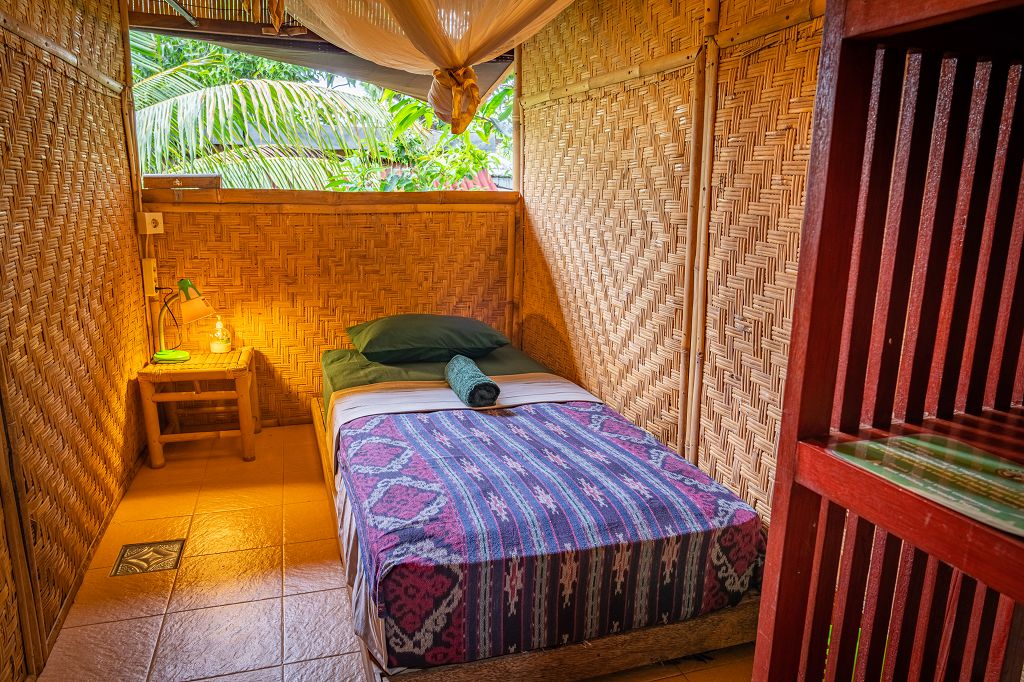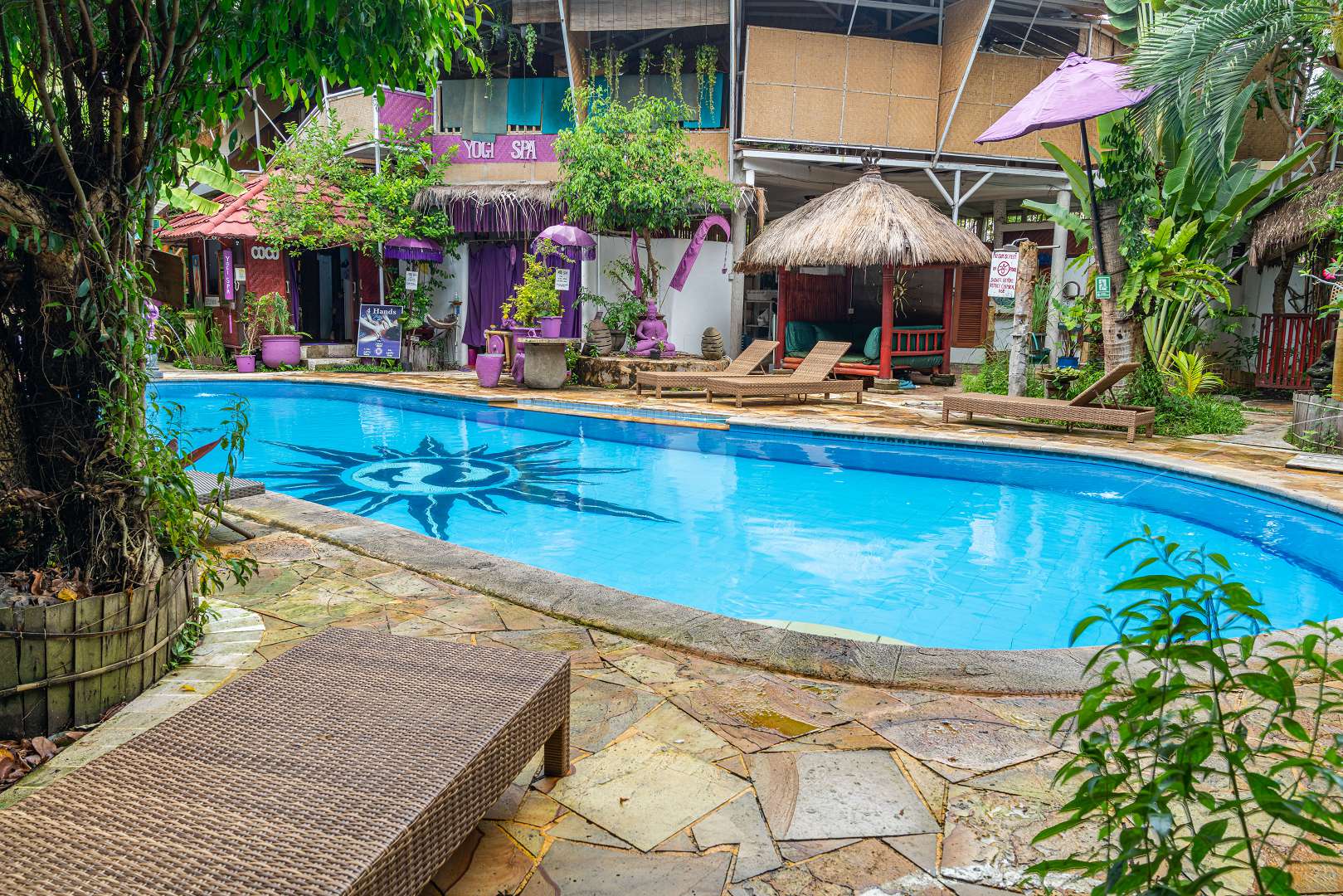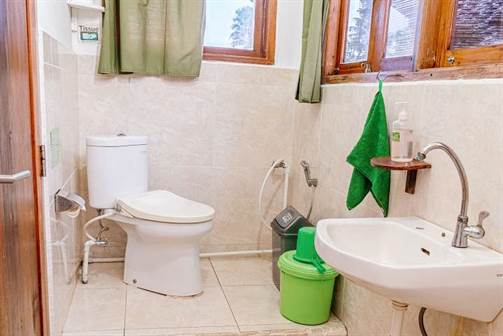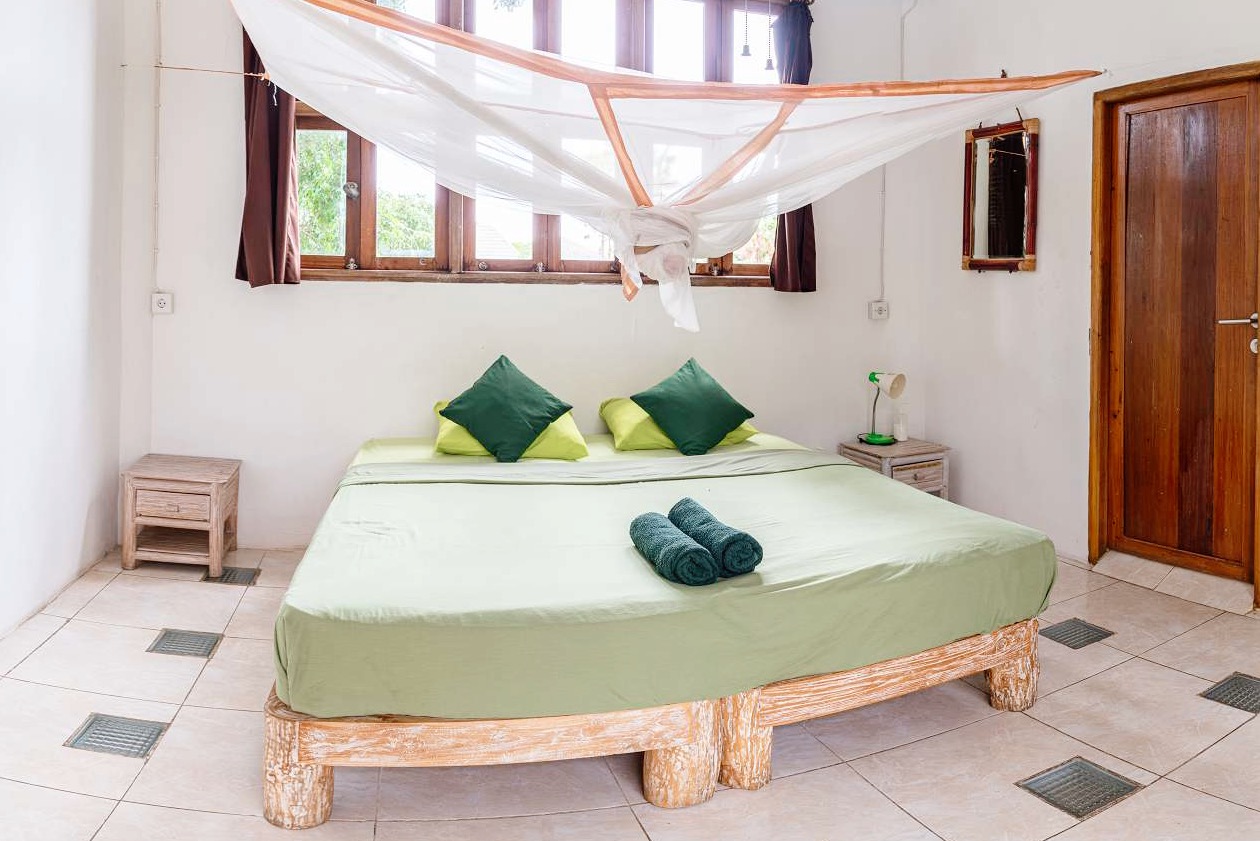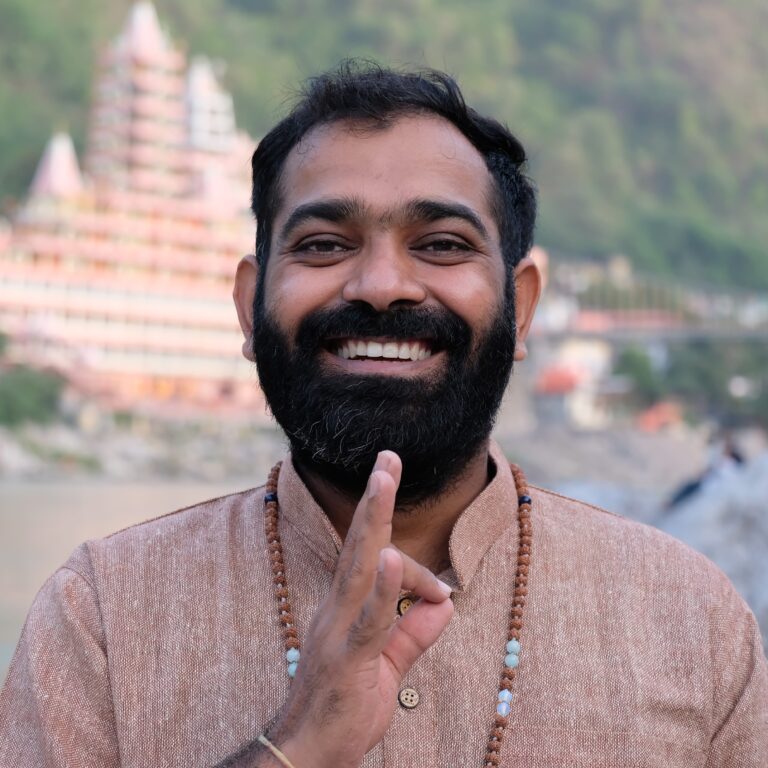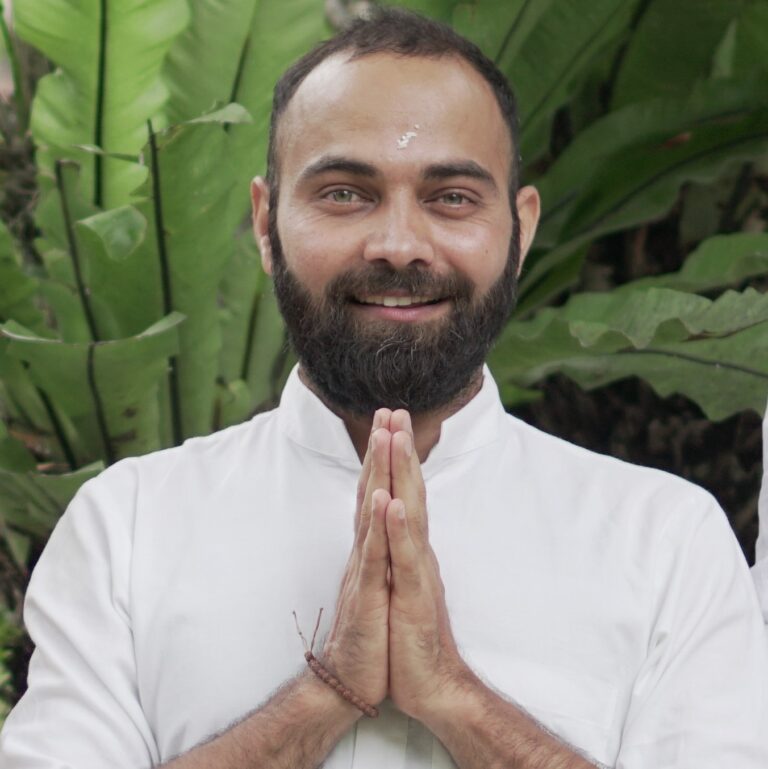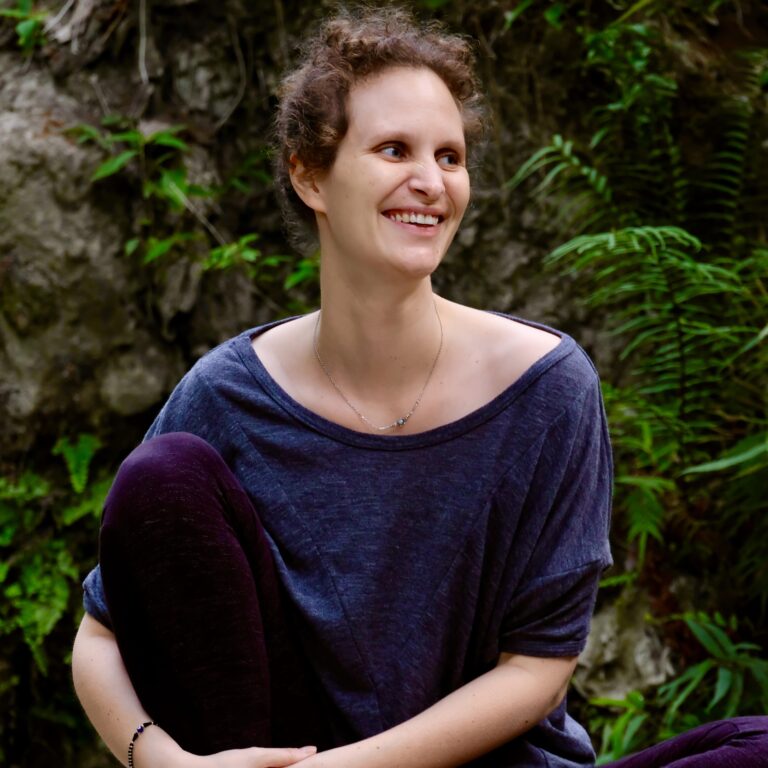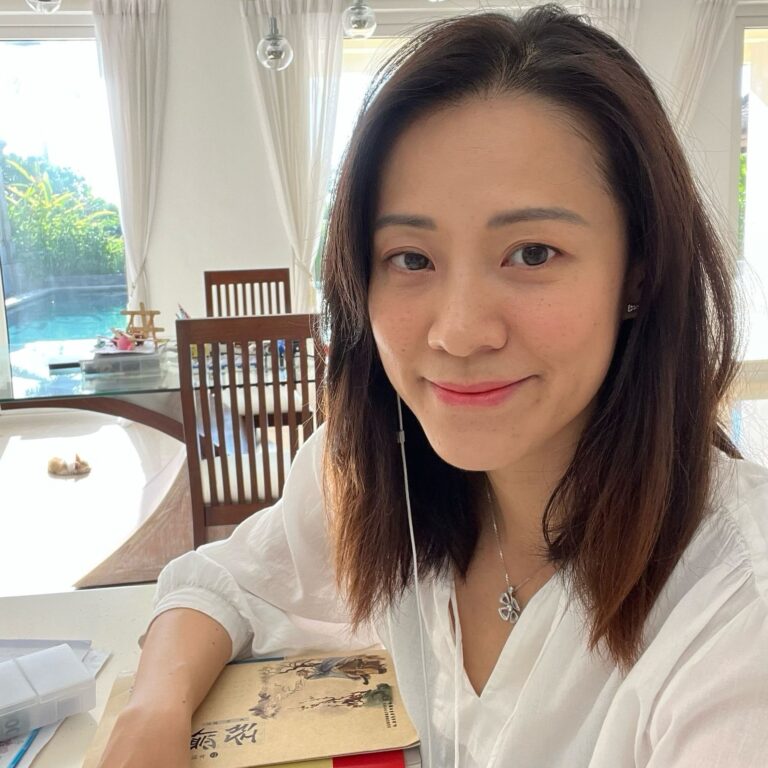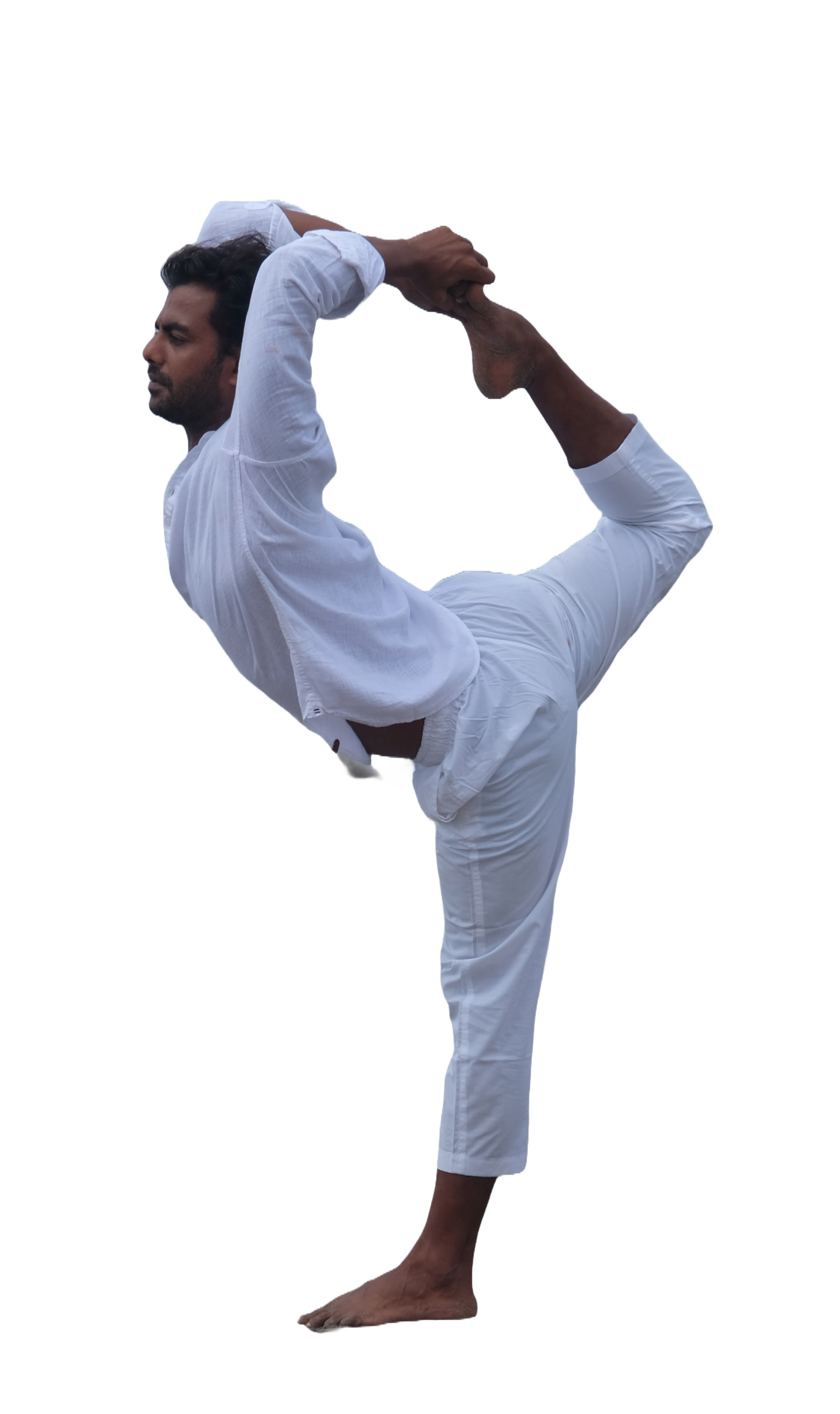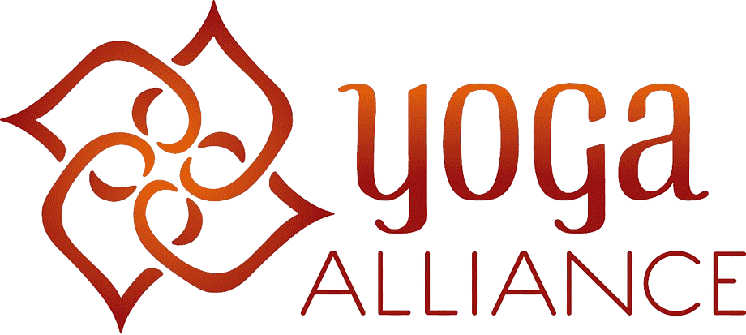
Certification :
Yoga Alliance® US
Skill Level :
All Levels
Duration :

Certification :
Yoga Alliance® US
Skill Level :
All Levels
Duration : Eight weeks
Yoga Styles: Hatha Yoga, Hatha Flow, Vinyasa Flow, Yin Yoga, Ashtanga Vinyasa, Arm Balancing
Experience two transformative months full of inspiration and challenge. Our 500 hour Yoga Teacher Training in Bali combines the foundational 200 hour YTT, where you’ll learn the essentials of becoming a Yoga teacher, with an advanced 300 hour training.
Course Structure
The program is divided into two semesters, each designed to build upon the previous learning. After completing the first semester, there is a ten-day break, providing you with the opportunity to rest and internalize the information you’ve learned, and explore the island’s natural beauty and cultural richness.



GET IN TOUCH
Semester 1
The first part of the training focuses on different Yoga styles, including traditional Hatha Yoga, Hatha Flow, and Vinyasa Yoga. You’ll learn the fundamental principles and techniques of each style, gaining a comprehensive understanding of their unique benefits and applications. These three weeks provide a solid base for your practice and teaching journey.
Semester 2
This part of the training is designed to expand your practice and deepen your understanding of Yoga. Here we will dive deeper into Ashtanga Vinyasa and arm balancing. Chakra meditation is another key component of this training, guiding you through techniques to balance and align your energy centers, promoting overall well-being and heightened awareness. The study of the Hatha Yoga scriptures will enrich your philosophical and spiritual knowledge, offering a deeper context for your physical practice.
Join us
Over two intensive months of dedicated and disciplined practice, you’ll have the opportunity to deepen your knowledge and skills. This experience will lead to a profound shift in how you see yourself and the world, ultimately transforming your life.
Why Choose Us?
We offer a place where you can find happiness through movement, pranayama, meditation and well-balanced nutrition. We are here to guide you on your spiritual journey, to connect with your Inner-Self and to find contentment and peace in life.
- Kindness, honesty and community are more important for us than profit!
- Our groups are small to support you individually!
- Our previous students feel confident to teach after the training!
- You will teach from day 2!
- By choosing us you support a family business, our owners are your teachers!
- We live Yoga and here Yoga is for everyone!
- We respect the culture and origins of Yoga!
- You will learn from a descendent of the Sage Atri bloodline!
- We are not perfect but we always try our best!
- We want you to shine and thrive!
Program Highlights
Throughout the course, you’ll engage in intensive practice sessions, interactive workshops, and detailed lectures. These elements are designed to challenge you, fostering personal growth and professional development. By the end of the 500 hour yoga teacher training Bali, will not only have all the tools you need to guide your students through a well-designed and safe yoga class , you will also have knowledge in more specialized topics, ready to inspire and lead others with your enhanced expertise.
Throughout this 500 hour Yoga TTC in Bali we will take a journey through the rich history and profound philosophy of Yoga. We will begin with the foundational texts and gradually explore more complex philosophical concepts, providing a comprehensive understanding of yoga’s evolution and its relevance today.
Aims and Objectives of Yoga: Understand the primary aims of yoga and the specific objectives it seeks to achieve for physical, mental, and spiritual well-being.
Yoga Eras: Explore the different historical eras of yoga, from its origins in ancient texts to its classical formulations and modern adaptations.
Paths of Yoga: Study the various paths of yoga, including Karma Yoga, Bhakti Yoga, Jnana Yoga, and Raja Yoga, and how each path offers unique approaches to spiritual practice and self-realization.
Patanjali Yoga Sutras (Yoga Darshan): A foundational text on the practice and philosophy of yoga that comprises 196 sutras and outlines the eight limbs of yoga (Ashtanga Yoga): Yama (ethical disciplines), Niyama (personal observances), Asana (postures), Pranayama (breath expansion), Pratyahara (withdrawal of senses), Dharana (concentration), Dhyana (meditation), and Samadhi (absorption).
Hatha Yoga Pradipika: A classical text on Hatha Yoga written by Swami Swatmarama in the 15th century that describes physical practices (asanas), breathing techniques (pranayama), and purification methods (shatkarmas) essential for preparing the body for higher spiritual practices.
Gheranda Samhita: Another significant text on Hatha Yoga, attributed to the sage Gheranda that emphasizes a seven-fold path to purification and transcendence of the body and mind.
We are blending historical and philosophical knowledge with practical applications so that you will gain a holistic perspective that enriches your practice and teachings.
Variety of Yoga Asana Styles
You will get the chance to practice different styles of Yoga asana. Apart from traditional Hatha Yoga, we teach Ashtanga Vinyasa and more modern styles like Hatha Flow, Vinyasa Flow, and Arm balancing. We also have Yin Yoga classes, but they are for your own practice only. If you would like to learn more about Yin Yoga and be able to teach it, you can join our 50 hour Yin Yoga training.
Focus on Personal Practice
The main focus in these classes is your own practice. We encourage you to use this training to deepen your own Yoga practice. Cultivating a regular self-practice will be the foundation of all your teaching.
Transformation Through Continuous Practice
After practicing continuously for two months, you will see a huge transformation in your life. It is a wonderful opportunity to integrate tapas – austerity – into your life.
In our asana alignment classes we will then dive deeper into the art of teaching asana. You will learn
~ How to perform different Yoga postures
~ How to integrate conscious breath awareness
~ The benefits and precautions of each asana
~ How to use props like blocks and belts correctly
~ How to cue your students to get into the postures
~ How to use hands on adjustment under consideration of your students un
After building the foundation in the first month we get into more advanced asanas in the second half of the training.
Ashtanga Vinyasa is part of the Hatha Yoga system and consists of six fixed series with a set order of asanas. We cover the Primary Series and you will be introduced into the art of teaching Ashtanga Vinyasa. We include both Mysore and Led classes. In the second half of the course we will practice in Mysore style 5 days per week and on the 6th day we practice a led class. This allows you to practice in your own pace and according to your experience and to become familiar with both teaching styles.
You will learn
~ Sanskrit counting
~ Drishti in the asanas
~ The importance of Ujjayi breath during the practice of Ashtanga Vinyasa
~ How to do Vinyasa flow (with jumping back and front)
~ How to do Chakrasana (rollback)
~ How to go from Hasta Uttanasana into Chakrasana and stand back up into Hasta Uttanasana
We will break down the asanas of the Primary Series and you will learn the alignment and the flow of the poses included.
Opening Mantra
Surya Namaskar A (5 rounds)
Surya Namaskar B (5 rounds)
Standing postures
Sitting postures
Finishing postures
Savasana
Closing Mantra
We have a special module to dive deeper into the world of arm balances. This section is designed to give students with the skills and knowledge needed to master these challenging yet invigorating poses.
A sneak peek of what students will learn:
- Strengthening and stabilizing the core muscles to support arm balances
- Improving balance and focus through mindful practice
- Techniques for safely entering and exiting arm balancing poses
- Understanding alignment principles to prevent injuries, including bone-on-bone alignment
- Modifying poses to suit different body types and abilities
- Building confidence and overcoming fears associated with challenging postures
- Exploring a variety of arm balancing poses, from foundational to advanced levels
- Encouraging creativity and playfulness in exploring different variations and transitions
Some asanas included:
- Kakasana – Crow pose
- Eka Pada Koundinyasana – Flying splits
- Adho Mukha Vrikshasana – Handstand
- Eka Pada Bakasana – One legged crane pose
- Mayurasana – Peacock Posture
- Pincha Mayurasana – Feathered peacock pose
You will learn the complete sequence of 48 yogic exercises created by Sri Dhirendra Bhramchari to activate the pranic body and detoxify and nourish your joints.
These small movements aligned with breath are very powerful in sharpening the senses and developing willpower and strength.
Chakras are energy centers in our body. They are junction points where the different nadis meet and represent a connection between our physical and astral body. We have seven main chakras in our body along our spinal cord.
The way we live our lives nowadays often results in energy blockages and can lead to physical and mental disturbances and diseases. Chakra meditation is a powerful source to activate and purify our chakras. When all chakras are open, turning and glowing, there are no blockages in the physical, mental and spiritual areas. We feel energetic, stable and in our center.
You will learn to use different meditation techniques, asanas and sequences for each chakra to unfold its potential.
You get the chance to practice some of the six Kriyas used to purify the body and prepare it for a successful Yoga practice.
You will learn the benefits and precautions of all the Shatkarmas and how to perform them in a safe way to clean and purify your body.
~ Dhauti – Danta Dhauti, Antar Dhauti, Hrid Dhauti, Moola Shodhana Dhauti
~ Vasti – Jal and Sthal
~ Neti – Jal and Sutra
~ Trataka – Bahir trataka , Antar trataka, Adho trataka
~ Nauli – Uddiyana Bandha, Dhyana Nauli, Vama Nauli, Daksina Nauli
~ Kapalbhati – Vatakrama kapalabhati, Vyutkrama kapalabhati, Sheetkrama kapalabhati
What is the difference to breathing practice and pranayama? In this module we will teach you different breathing techniques and introduce you to the art of pranayama – breath expansion.
Breathing
~ Natural breathing
~ Abdominal breathing
~ Thoracic breathing
~ Clavicular breathin
~ Yogic breathing
You will learn different variations of each pranayama technique and get familiar with the pranayamas mentioned in the Hatha Yoga scriptures.
~ Suryabhedana
~ Ujjayi
~ Sheetkari
~ Shitali
~ Bhastrika
~ Bhramari
~ Murcha
~ Plavini
~ Sahit Pranayama (Sagarbha, Nigarbha)
~ Suryabheda
~ Ujjayi Pranayama
~ Sheetali Pranayama
~ Bhastrika Pranayama
~ Bhramari Pranayama
~ Murchha (Unconsciousness) Pranayama
~ Kevali Pranayama
The meditation module in our 500 hour yoga teacher training Bali consists of both theory and practice classes.
You will learn:
~ The 12 steps of meditation
~ Foods that help improve focus
~ The ideal time and place for meditation practice
Additionally, the module covers:
Basic techniques of meditation
~ Benefits of meditation
~ Mindfulness practices
Every day we will practice meditation together for you to deepen your practice and experience different mediation techniques.
You will also practice and learn the concept of chakra meditation. Chakra meditation is a powerful source to activate and purify the chakras and you can use it for your own practice and your classes.
Mudras are higher practices that lead to awakening of the pranas, chakras and kundalini. They can give major siddhis, psychic powers, to the advanced practitioner. Usually, mudras are introduced after some proficiency has been attained in asana, pranayama and bandha, and gross blockages have been removed.
We will introduce you to the five classes of mudras and teach you several hand mudras and their effects.
~ Anjali Mudra
~ Jnana Mudra
~ Chin Mudra
~ Dhyana Mudra
~ Prana Mudra
~ Apana Mudra
~ Vayu Mudra
~ Akasha Mudra
~ Prithivi Mudra
~ Varuna Mudra
~ Agni Mudra
~ Ganesha Mudra
~ Surbhi Mudra
~ Asthma Mudra
~ Pankaj Mudra
~ Kubera Mudra
~ Shankh Mudra
~ Garuda Mudra
~ Jal Shaamak Mudra
~ Yoni Mudra
~ Linga Mudra
Every day we are going to chant different mantras together. You might have already experienced the power of certain mantras and how they resonate with you. We will teach you different mantras and their power. We will give you time to practice and repeat the mantras together regularly so that they can settle and unfold their potential.
Mantras you will learn:
~ OM
~ Ganesha Mantra
~ Shivaya Mantra
~ Rama Mantra
~ Shanti Mantra
~ Gayatri Mantra
~ Maha Mrityunjaya Mantra
~ Anapoorna Mantra
~ Patanjali Mantra
~ Ganesha Vakratunda Mantra
~ Guru Mantra
~ Maha Mantra
~ Om Asatoma Sadgamaya Mantra
Nutrition plays a major role in the yogic lifestyle. The food we consume has a tremendous effect on our health and the quality of our yoga practice. Ancient yogis were already aware of that and designed the “Yogic diet”. You will study the different qualities of food and the effects they have on your body; the components of the yogic diet and how to incorporate it in your life.
Ayurveda is the knowledge of life, over 5000 years old and one of the oldest medical systems on earth. In the second half of the 500 hour teacher training Bali we would like to give you an insight in this fascinating philosophy.
India’s ancient health system offers so much wisdom for living a healthy and happy life and we are looking forward to sharing some of this knowledge with you.
~ Introduction to Ayurveda
~ Branches of Ayurveda
~ Five Elements
~ Tri Dosha: Vata, Pitta & Kapha
~ Sapta Dhatus
~ Tips to Balance the three doshas
~ Balancing Diet for Tri Dosha & Six Tastes
~ Improvement of digestion and health
~ Daily routines, seasonal routine and exercises
~ Tips for air travel
It is important to know how the different Yoga practices affect the physical body. In our anatomy and physiology classes we give you an introduction into how the human body is build and how it functions. We will teach you how different systems work together and how they are affected by asana, pranayama and meditation practice.
You will learn about
~ Structural design of the human body
~ Musculoskeletal system
~ Hip anatomy
~ Spine anatomy
~ Core Anatomy
~ Nervous system
~ Cardiovascular system
~ Respiratory system
~ Arm and shoulder anatomy
~ Anatomical patterns in arm balances
~ Anatomical patterns in forward bends, back bends and twists
Discover the secrets behind the art of teaching Yoga. Ever wondered how your teachers flawlessly flow from one asana to another? In our teaching methodology module, you’ll master the skill of sequencing and designing a perfectly balanced Yoga class.
Here is just a glimpse of what you will learn:
- Preparing yourself to step into the classroom with confidence
- Mastering the art of demonstrating postures, guiding your students with ease
- Harnessing the power of adjustment, ensuring your students find safe alignment
- Understanding the essential precautions to keep in mind while teaching
- Finding your voice, creating a serene atmosphere in each class
- Creating a deep connection with your students, addressing their unique needs and states of being
- Finding out the counter poses for each asana, offering a holistic experience to your students
- Designing well-rounded classes for beginners, intermediate, and advanced practitioners alike
- Tailoring classes with specific focuses, catering to individual goals and aspirations
- Navigating the challenge of teaching students at different levels in the same class
At the end of the first month, you get the chance to teach your first Yoga class in the style of your choice (Hatha Yoga, Hatha Flow or Vinyasa).
Time Schedule
Please note that the time schedule is not fixed and can change accordingly to location, teacher availability, weather conditions and general situation.
06:30 to 06:45 am
Shatkarma
06:45 to 07:45 am
Pranayama/Meditation
07:45 to 09:15 am
Yoga asana practice
09:15 to 10:15 am
Breakfast
10:15 to 11:45 am
Yoga theory/Anatomy & physiology
11:45 to 01:30 pm
Asana Alignment
01:30 to 03:15 pm
Lunch
03:15 to 04:45 pm
Yoga philosophy
05:00 to 06:30 pm
Teaching practice
06:30 to 07:00 pm
Mantra Chanting
We have been with Yoga Alliance since 2017
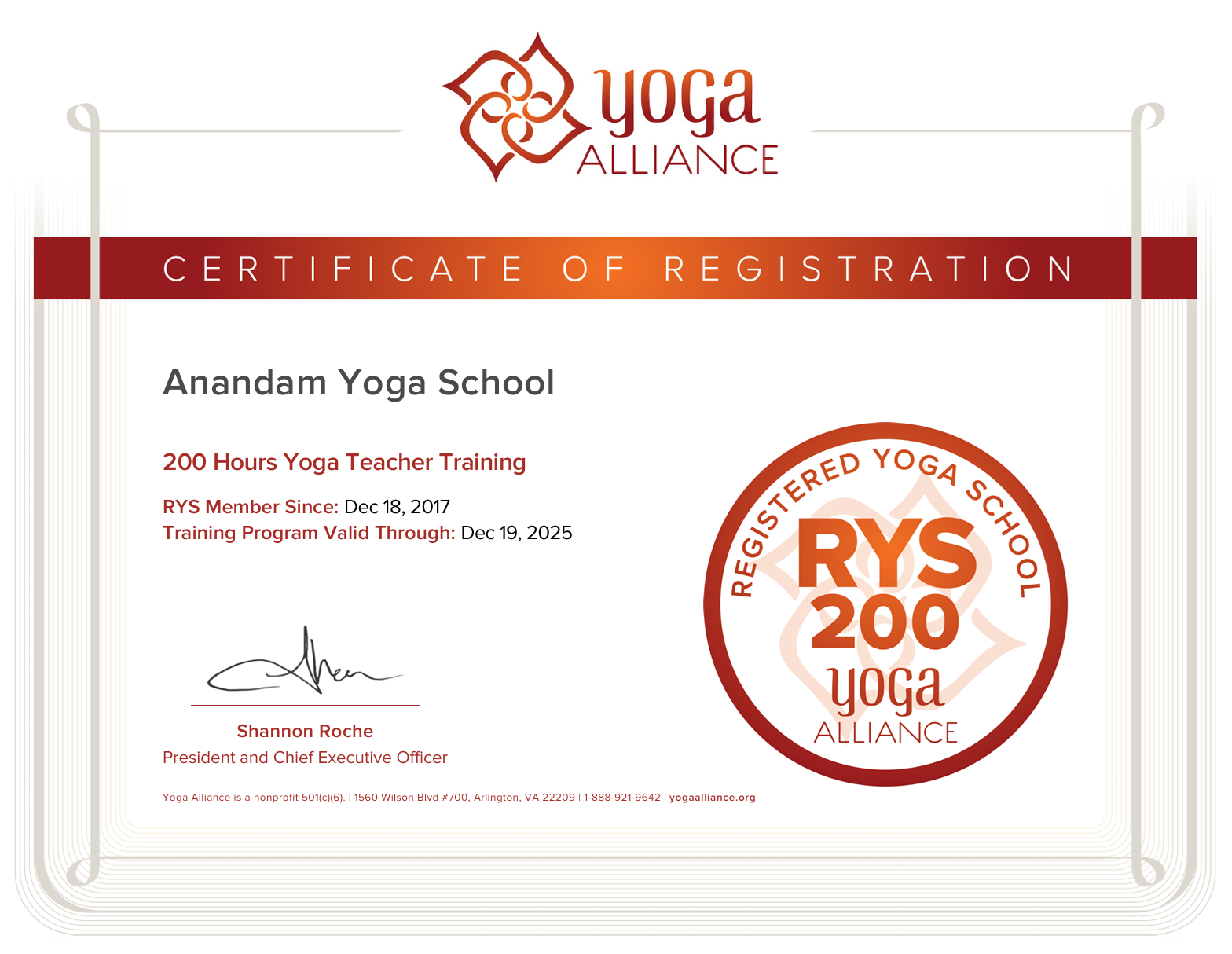

Upcoming Dates
What Our Customer Say About Us
The classes were rigorously structured, combining traditional and modern understandings of yoga and not just focusing on the asanas. This enabled a deeper understanding of practice and aided in our own personal journey and growth throughout the three weeks.
Our teachers were of the highest standard I have experienced, they really knew their stuff! They allowed time for open and honest conversations. Emotionally they were very supportive, always in contact whenever we needed them. Always with a smile on their faces and getting to understand us as individuals.
All the classes were accessible for all levels, I would highly recommended this yoga school to everyone wishing to broaden their understanding of Yoga in its entirety.
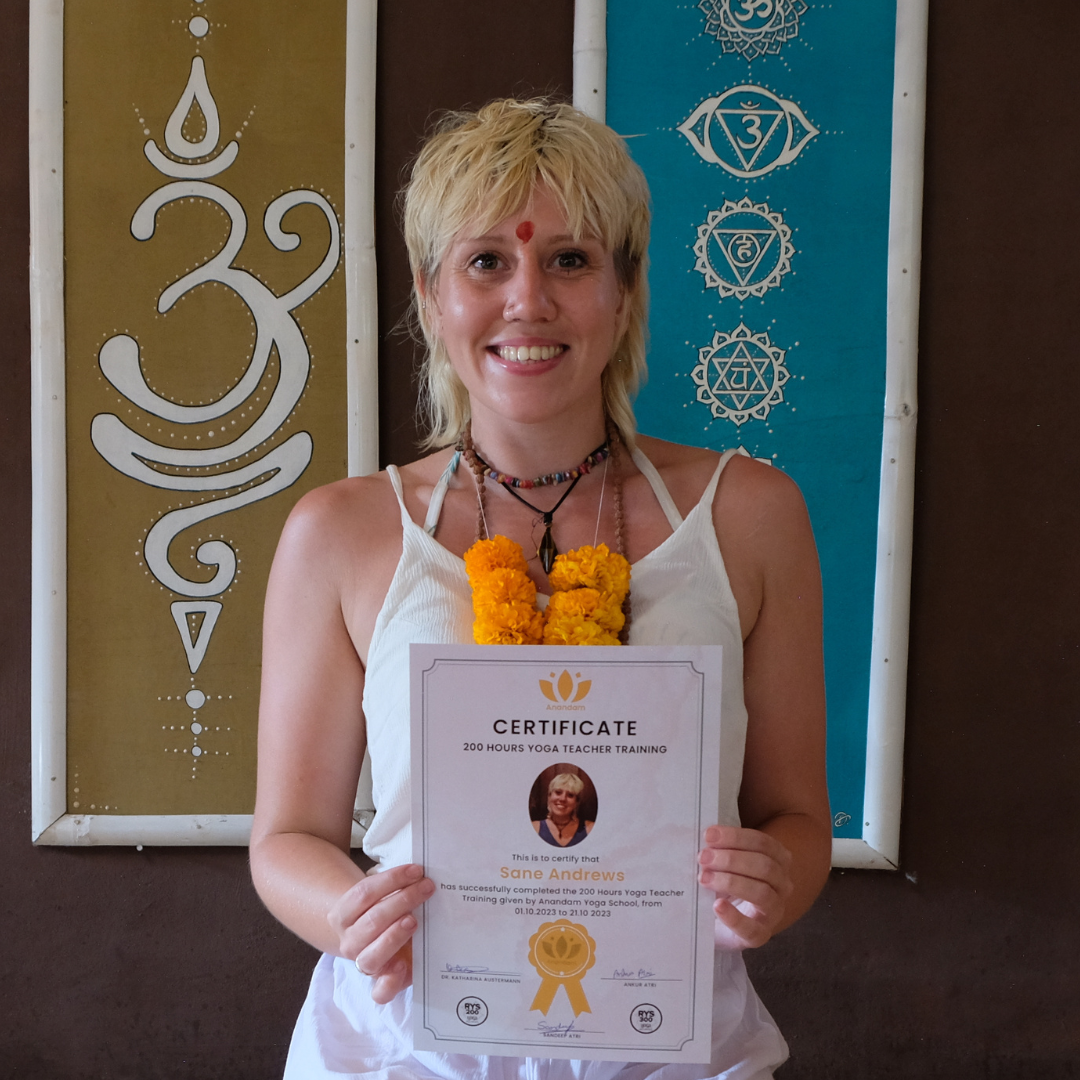
Sane Andrews
UK
Authentic, humble honest. I did have the best experience here with such safe and comforting teachers. The groups are small the lessons are full with valuable information.
Yoga Philosophy being thought by Sandeep, a native indian who grew up with yoga since he is a child and lives it with his whole heart is such a special, unique and most important authentic and honest experience which is hard to find in any other schools around Bali.
Katharina is also a wonderful devoted teacher and it is nice to see this balance of both it helps to understand.
I wouldn‘t go to any other school and I would love to join many more of Anandam Yoga School courses.
Thank you very much🙏
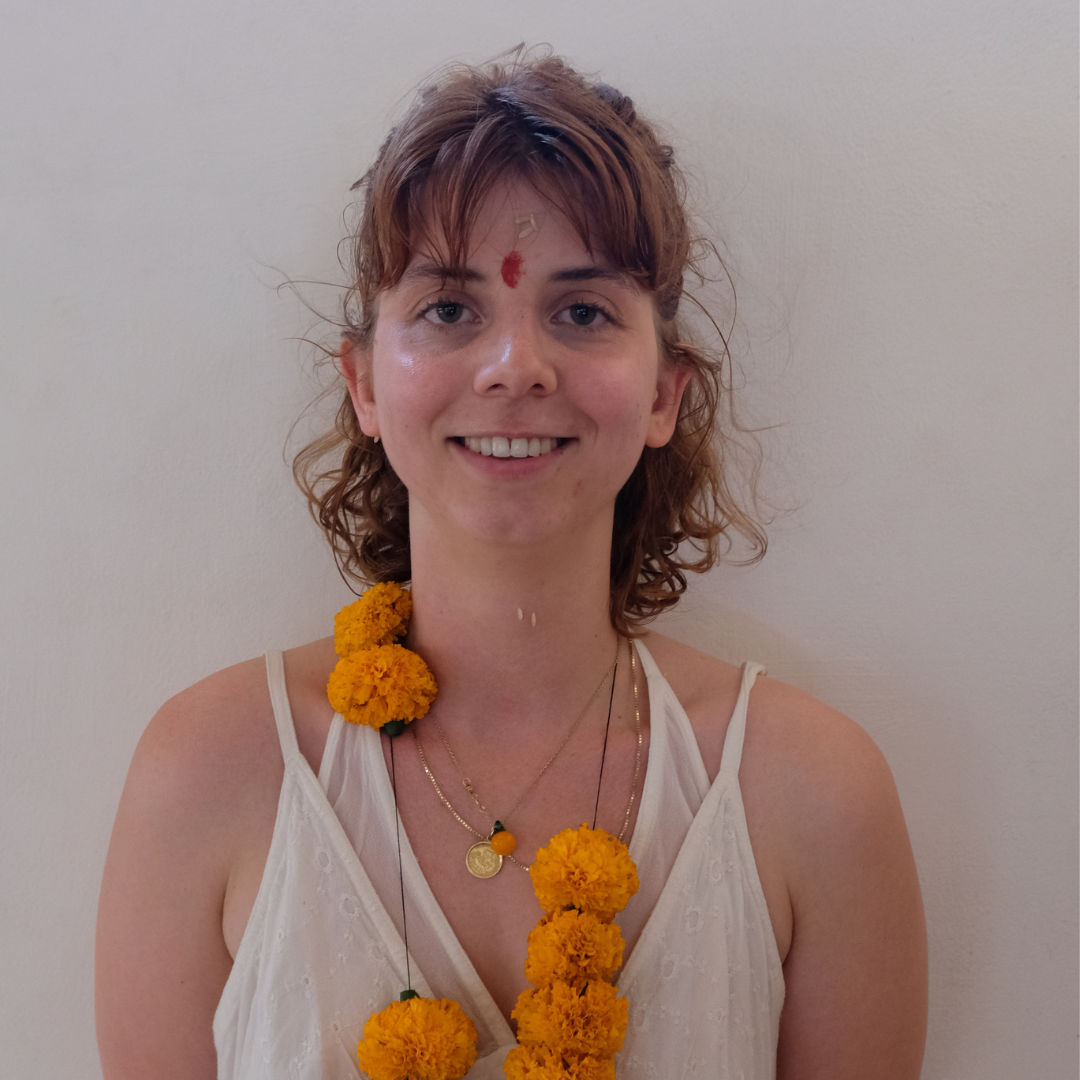
Marina Peter
Austria
Anandam yoga school is amazing!!! I learned so much from them. Ankur was an incredible teacher and was very knowledgeable in all aspects of yoga, asanas, pranayama, hatha, vinyasa, etc.
I absolutely loved this authentic yoga teacher training. I wanted to learn yoga from someone who knew the roots of yoga from India and Ankur taught that and more!
I feel like I gained an even deeper love and appreciation for yoga through this experience which I didn’t even know was possible.
They pushed me to be the best that I could be and I will always be grateful for that. The course taught me a lot and I am looking forward to teaching in my community back home!!
I would absolutely recommend Anandam Yoga School. They have a wonderful environment centered on learning and growing!
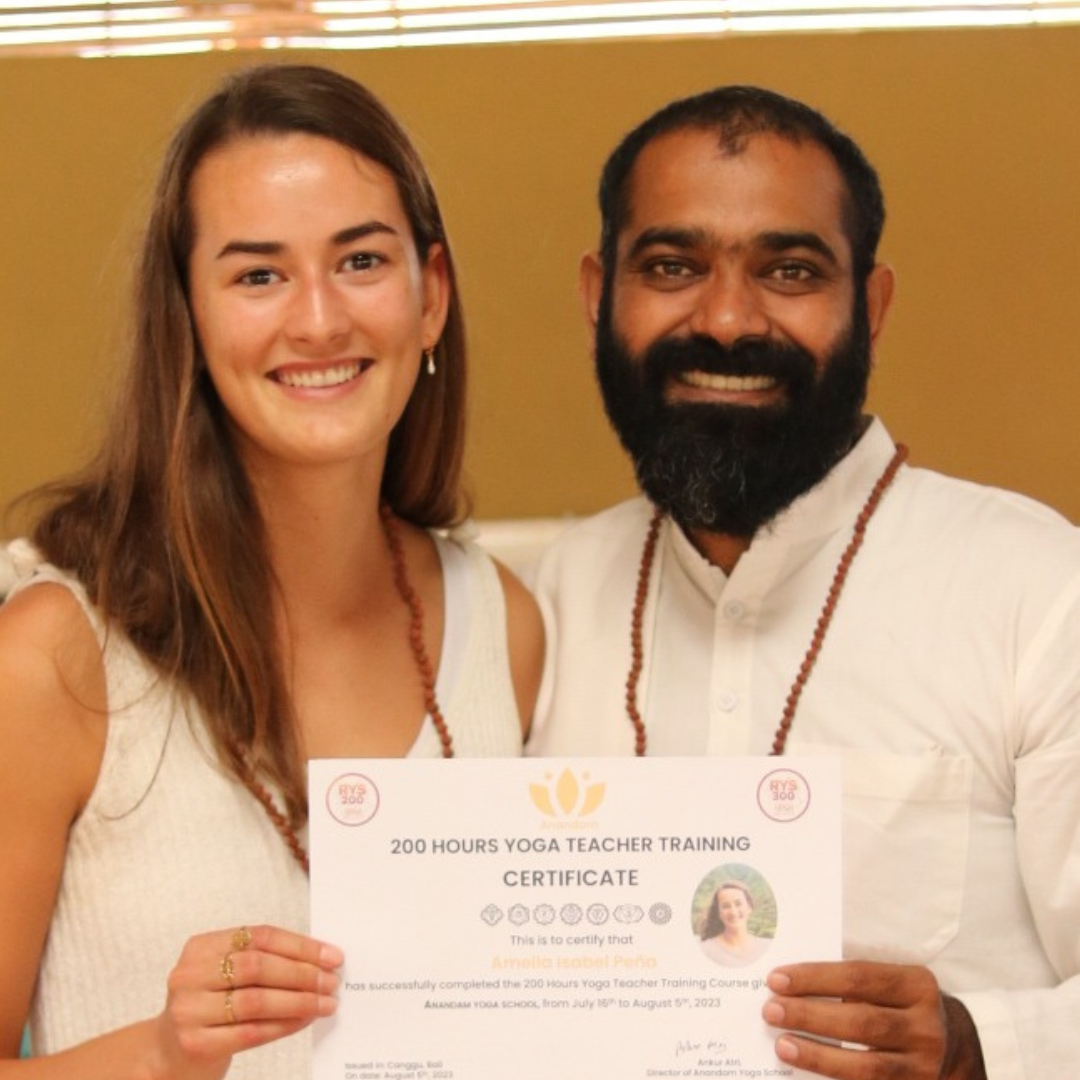
Amella Pena
USA
Lovely teachers with such an in-depth knowledge about Yoga. I have learned so much and enjoyed every minute learning here.
My Yoga practice will be so so different after this training. Thank you so much for sharing your wisdom and holding such a beautiful space for us.
10/10 would recommend 😉
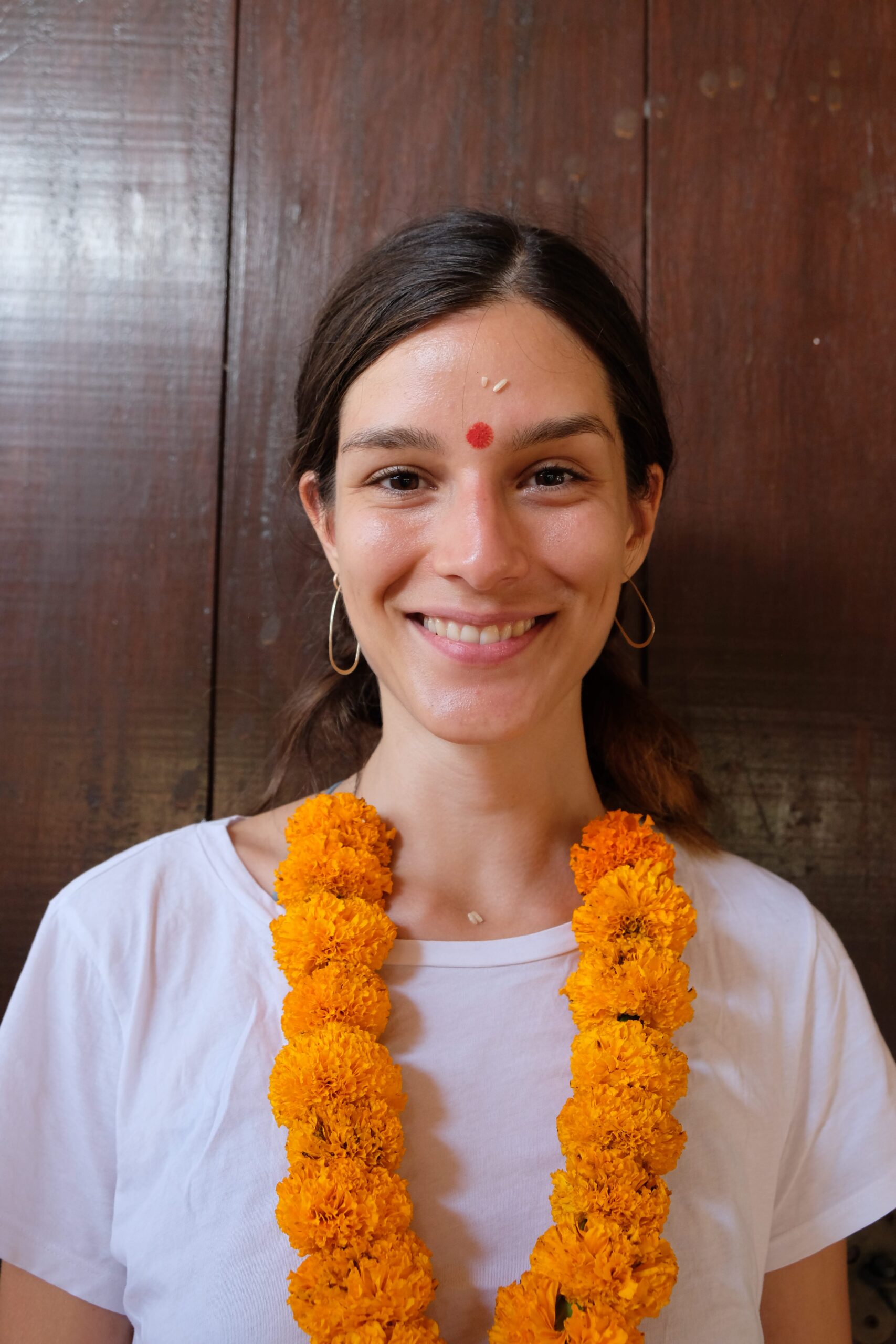
Evelyn Toma
Germany
I just finished my 200h Yoga teacher training with Anandam Yoga School and I couldn't be happier.
It was such a nice and meaningful experience for me. I learned so much about Yoga in these three weeks.Katharina, Sandeep and Ankur are amazing teachers and it felt like a family to spent time with them and the other students. Their knowledge about philosophy, anatomy, asanas and also ayurveda and pranayama and meditation is impressive!
I enjoyed every day of the training so much and I am so thankful I found Anandam Yoga School to do it there.
I would definitely recommend to do the Yoga teacher trainig here and to experience this wonderful journey with Anandam.
Thank you so much Katharina, Sandeep and Ankur🤍

Svenja Kuonen
Switzerland
I chose to take my 200h YTT on Bali with Anandam Yoga School as it was of utmost importance to me to learn about the foundations of Yoga from an Indian guide with a deep connection to the practice & its tradition in India, while having local rooting in Bali.
Sandeep, Katharina & Kadek imparted a well of knowledge about Yoga asana practice as well as anatomy, yoga philosophy, the history of yoga, pranayama, meditation, shatkarma (cleansing rituals), equity, cultural appropriation, and much more, for us students (and future teachers) to build on for a lifetime to come, knowing that we'll be able to honour the roots of Yoga in India as most of us return to share our practice in Western societies.
I am also deeply grateful for the care & support that Katharina & Sandeep provided to us throughout the journey, from travel logistics to a broad variety of recommendations (restaurants, clinics, visa agents, etc.) on anything we might need.
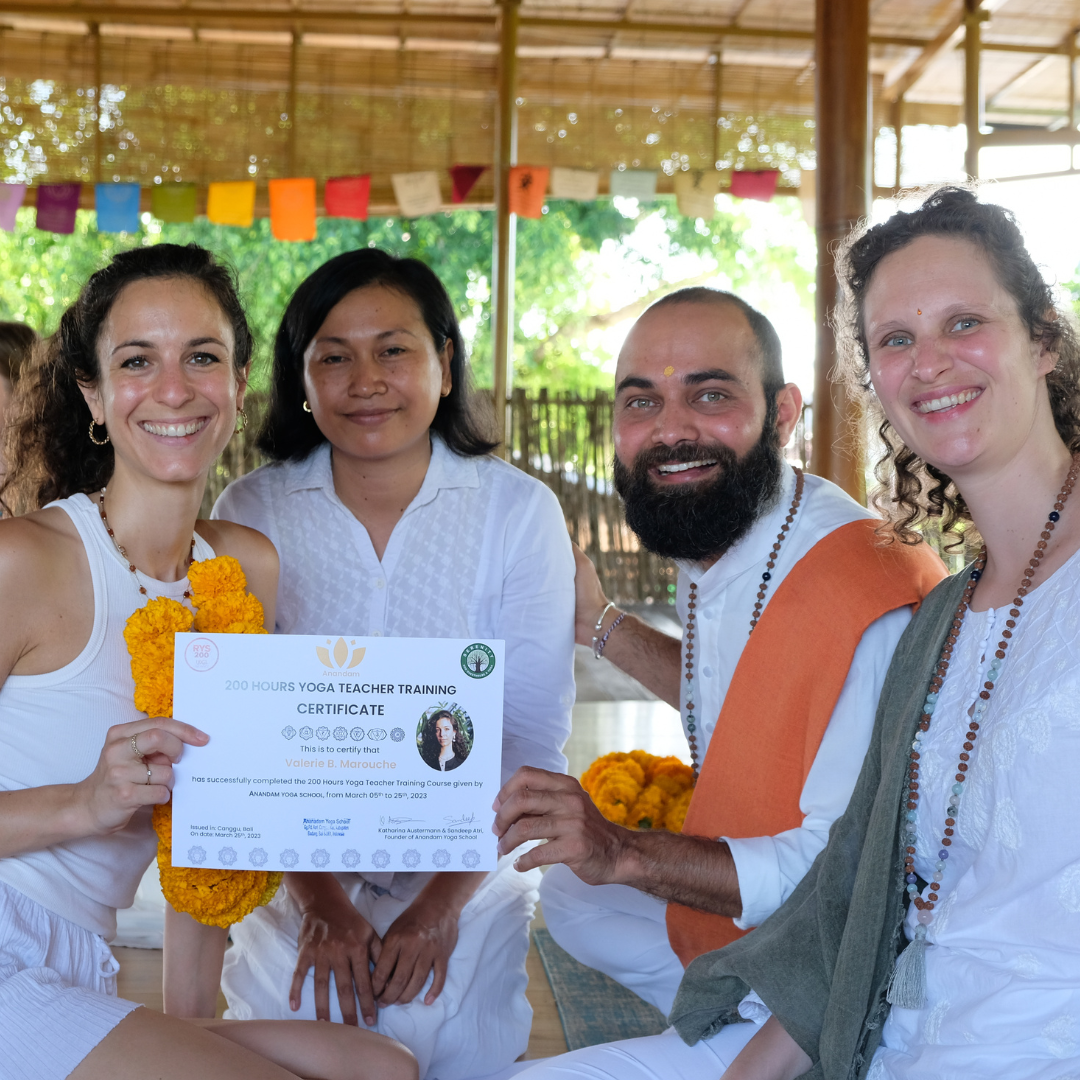
Valerie Marouche
Germany
I just finished my 300hr yoga teacher training with them. I am their return student as I also did my 200 hour ytt with them.
The experience with them are pleasant. I’ve learnt a lot from them, from asanas, alignments, philosophy, pranayama, and the Hindu tradition. I’ve grown so much after the training, feeling more confident in teaching yoga.
Ashtanga yoga was demanding and it’s great to have mysore style every morning with Sandeep as an instructor. He would challenge you and push you above your limits.
Arm balancing classes are fun and I have developed so much strength compared to when I first started the training.
Both Katharina and Sandeep have beautiful and kind souls. They are always there for you and back you up whenever you need them.
After 500 ++ hours we spent together we have developed a stronger bond as good friends! I would really recommend them if you are looking for yoga teacher training courses!!
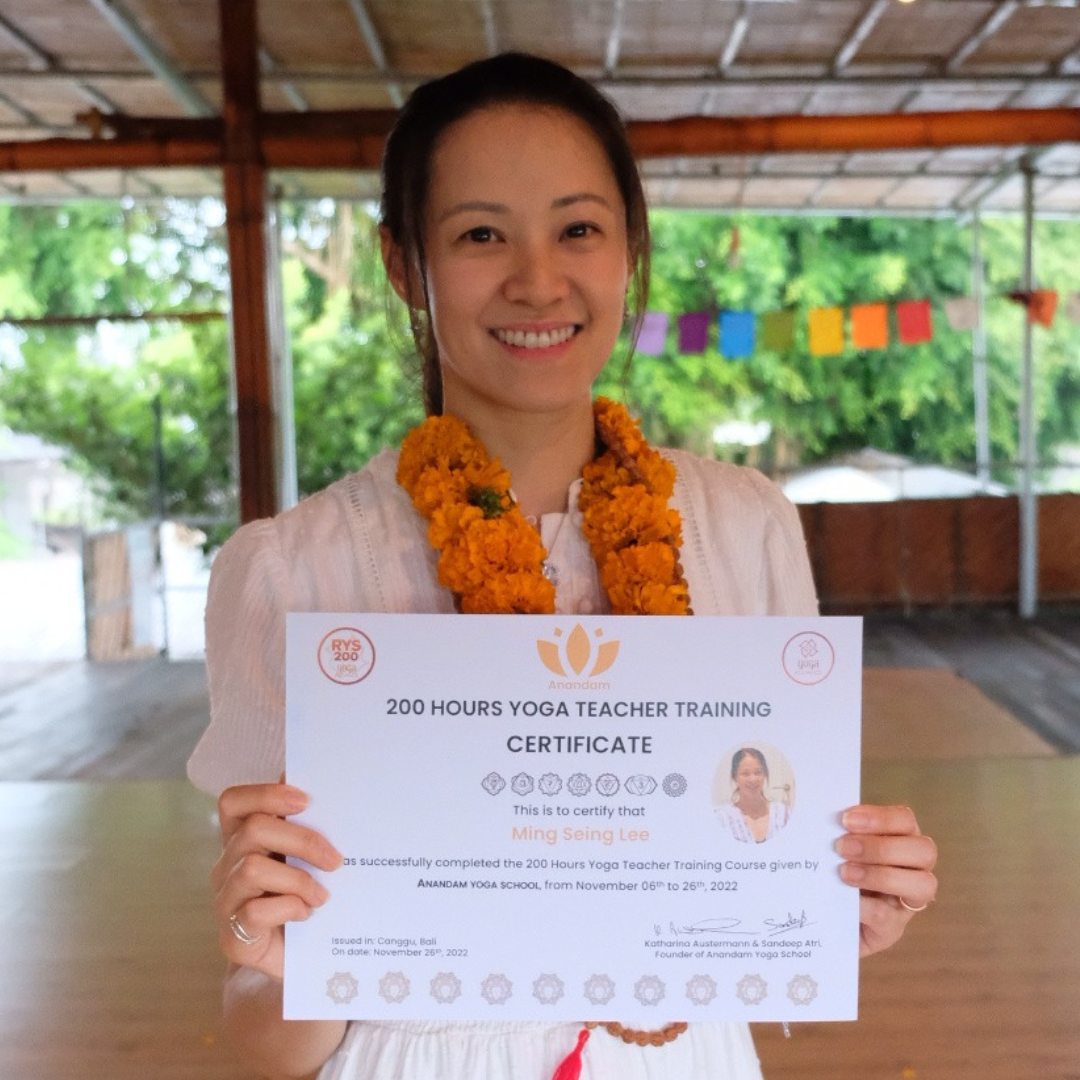
Ming
USA
Read Our Reviews - Anandam Yoga School


Our Google Review
Trustindex verifies that the original source of the review is Google. Amazing experience! Not only was the learning material very well-taught, but the lead instructor Ankur showed so much patience. He is extremely knowledgeable, kind, humble and created a great environment to learn in. Would absolutely recommend this 200-hour multi-style teacher training!Trustindex verifies that the original source of the review is Google. I just completed my 200-hour yoga teacher training with Ankur, and I am beyond thrilled with the experience. This course provided the full package: a comprehensive curriculum that left no stone unturned. Over the duration of the training, I grew stronger mentally, physically, and emotionally. The atmosphere was perfect for personal growth and self-discovery. Our teacher’s dedication was extraordinary—he gave his 200% every single day until the very last. I still don’t know how he managed to maintain such high energy and commitment, but it truly inspired all of us. His passion and knowledge made every session enriching and transformative. I wholeheartedly recommend this training to anyone considering becoming a yoga teacher or deepening their practice. It was an incredible journey that I loved every moment of, and I am grateful for the profound impact it has had on my life.Trustindex verifies that the original source of the review is Google. A truly loving, caring, and wise yoga teacher - Ankur. I feel like I can't thank you enough for this journey. No words can describe my gratitude. Loving every moment, embracing all the challenges. Thank you for guiding me through the 200-hour yoga teacher training. The body, the mind, the energy you radiate - it's truly inspiring.✨ Missing the classmates and you already! Thank you 💙Trustindex verifies that the original source of the review is Google. 50hrs Yin Yoga Teacher Training in Germany with this wonderful people Katharina and Sandeep, are amazing! They create a space with full of compation and love. They are also very intense and professional at teaching and training. I will try more trainings soon🙏 Thank you so much.Trustindex verifies that the original source of the review is Google. The yin training with Sandeep and Katharina was a wonderful experience. I am so grateful to have chosen their school. Their authentic, kind and deeply knowledgeable way of teaching is so inspiring and created the perfect space for us students to immerse into the practice and classes of philosophy, anatomy and history. The course was perfectly structured and at the same time Sandeep and Katharina are present to feel the energy of the group and adapt to the flow if needed. In such a short time we became a little family and I deeply cherish what we created! Thank you sooo much!Trustindex verifies that the original source of the review is Google. Katharina and Sandeep who are running the school put a lot of knowledge, energy and love into their trainings. I was able to join their 50h Yoga Nidra Training. In a small group, we were able to learn both practice, theory and history of Yoga Nidra in a very authentic way. Furthermore, pranayama, yin and hatha yoga were practiced on a daily base. As teachers Katharina and Sandeep are structured and but also flexible to adapt to the group's needs and mood. I am very glad to have been part of this training. Good energy attracts good people! Grateful for this!Trustindex verifies that the original source of the review is Google. Best yoga school 🩵 I did the 200hr YTT with Sandeep and Katharina and they are amazing human beings who love yoga and excellent teachers, so professional and approachable. We got to learn so much about the meaning of yoga and not only asanas. I will never forget this experience, the group of people was beautiful and I’ll be forever grateful.Trustindex verifies that the original source of the review is Google. Lovely teachers with such an in-depth knowledge about Yoga. I have learned so much and enjoyed every minute learning here. My Yoga practice will be so so different after this training. Thank you so much for sharing your wisdom and holding such a beautiful space for us. 10/10 would recommend ;)Trustindex verifies that the original source of the review is Google. The best experience ever!! Our teachers were just amazing, they thought us so many things, it was a life course more than a yoga course ahaha. Looking forward to be back for other courses!Trustindex verifies that the original source of the review is Google. I absolutely loved my training with Anandam yoga school. It was in-depth, authentic, traditional, thorough and incredibly enjoyable. Sandeep and Katharina have so much knowledge between them and are willing to share everything they know. Yoga is who they are, what they practice and what they share so I can’t think of better people to learn from. My goal coming in to this training was to increase my confidence and to be able to confidently lead a yoga class and that has definitely been the outcome for me. I feel equipped with the knowledge and tools to design a traditionan class that encompasses all the elements of yoga and share this with students. I’m already planning my trip to Germany to join their 300hr teacher training as I can’t think of better people to learn from. Thank you Sandeep and Katharina!
Accommodation & Course Packages
We genuinely value direct bookings with us as they help us provide you with the best possible experience.
You can make a deposit of $500 to book a spot. If something goes wrong, changing your dates is free and easy
Dormitory
- 60 nights
- Breakfast
- Study Material
- Certification
- Mosquito net
- Shared bathroom
- Safety box
- Swimming pool
- Wi-Fi access
Private single room with fan
- 60 nights
- Breakfast
- Study Material
- Certification
- Mosquito net
- Shared bathroom
- Safety box
- Swimming pool
- Wi-Fi access
Private double room with fan
- 60 nights
- Breakfast
- Study Material
- Certification
- Mosquito net
- Private bathroom
- Safety box
- Swimming pool
- Wi-Fi access
Private double room with AC
- 60 nights
- Breakfast
- Study Material
- Certification
- Mosquito net
- Private bathroom
- Safety box
- Swimming pool
- Wi-Fi access
Big private double room with AC
- 60 nights
- Breakfast
- Study Material
- Certification
- Mosquito net
- Private bathroom
- Safety box
- Swimming pool
- Wi-Fi access
Private double room with AC at SB
- 60 nights
- Breakfast
- Study Material
- Certification
- Mosquito net
- Private bathroom
- Safety box
- 500m away from the course venue
- Wi-Fi access
Your Yoga Teachers
FAQs
Yes, this course is suitable for all experience levels. If you are a beginner it is a wonderful way to start your Yoga journey from the base and create a strong foundation. This 500 hour Yoga teacher training is a blend of our foundational 200 hour Yoga teacher training and our advanced 300 hour Yoga teacher training. It will equip you with everything you need to start your Yoga path and to deepen your practice and teaching.
Our average class size is 5 to 10 students. We believe in individualized support thus the smaller group size. It allows us to support every student on their personal Yoga journey.
The youngest student we had was 18 and the oldest student we had so far was 60. So, we have quite a wide age range, which beautifully allows Yoginis and Yogis of different ages to learn from each other.
Yes, definitely! It is a beautiful way to deepen your own practice and learn more about the roots of Yoga and experience a deep immersion into the yogic practices.
We offer different course packages. You can choose to stay with us or find you own accommodation. The basic course fee (without accommodation) includes all study materials, Yoga Alliance certification after successful completion and daily breakfast. You can choose from different course and accommodation packages if you choose to stay with us.
In our training, we slowly open and strengthen the physical body allowing you to gradually increase strength and flexibility throughout the training. Yoga is a cleansing and purification process as well, thus it is likely that you are being challenged during the course on different levels (physical, mental, emotional), but not in regards to physical over-exertion.
This training is a combination of our 200 hour Multi-style Yoga teacher training, including Hatha Yoga, Hatha Flow and Vinyasa Flow and our advanced 300 hour Yoga teacher training focused on Ashtanga Vinyasa and arm balancing.
- More than 150 asanas and their alignment, variations and modification
- Yoga Sequencing: Balanced class and Peak Pose sequencing
- Hands on adjustments
- Daily teaching practicum
- Yoga philosophy – origins and history of Yoga, Patanjali Yoga Sutras, Hatha Yoga, Ashtanga Yoga, paths of Yoga and more
- Hatha Yoga Scriptures
- Yoga anatomy and physiology, injury awareness
- Sanskrit terminology
- Various pranayama and meditation techniques
- Mudras and Mantras
- Ayurveda and Yogic diet
- Cultural appropriation
- Ashtanga Vinyasa Primary Series and Arm Balancing
- Sukshma Vyayama
- Chakras and Chakra Meditation
The nearest airport is I Gusti Ngurah Rai International Airport in Denpasar. From there you can book a grab or gojek to reach the course venue (250 k – 300 k IDR). You can download the apps and they are a great to get around in Bali for reasonable prices. You can get a sim card at the airport.
Please bring comfortable, ideally light cotton clothes for the practice; white clothes for the opening and closing ceremonies; natural mosquito repellent; beach towels; your everyday toiletries; light and airy clothing; sunscreen and all you think you need for a wonderful time in the tropical Bali.
Yes, sure! We don’t have any dietary restrictions during our Yoga teacher training. However, we recommend to adhere to a vegetarian diet during the Yoga teacher training Bali, to feel the effects on body and mind.
Practice Yoga regularly, drink enough water, try to cultivate a positive and open mindset, try to get enough rest and take time for relaxation.
To reserve your spot in the course we kindly ask you to deposit $500. This deposit is non-refundable. In case you have to cancel the training for any reason, the deposit can be applied to a later training.
Yes, this 500 hour Yoga teacher training is registered with Yoga Alliance and you will receive a Yoga Alliance affiliated certificate after successful completion. With this certification you can register with Yoga Alliance as a RYT-500 (Registered Yoga teacher – 500 hours) and you can teach Yoga internationally.
Our Gallery
Eligibility Criteria
Before joining Anandam Yoga School’s 500 hours Yoga Teacher Training in Bali you have to fulfill these eligibility criteria.
The minimum age to join this course is 18 and the maximum age is 65 years. If you are older than 65 please provide a medical certificate. Your safety is important for us!
You should be able to speak, read and write basic English as this course in conducted in English.
You have to be open minded and interested to learn the ancient teachings and the traditional way of Yoga.
If you are pregnant please provide a medical certificate.
You must be physically and mentally healthy and fit.
You have to provide a medical certificate if you are going through any treatment or have any major injuries.

